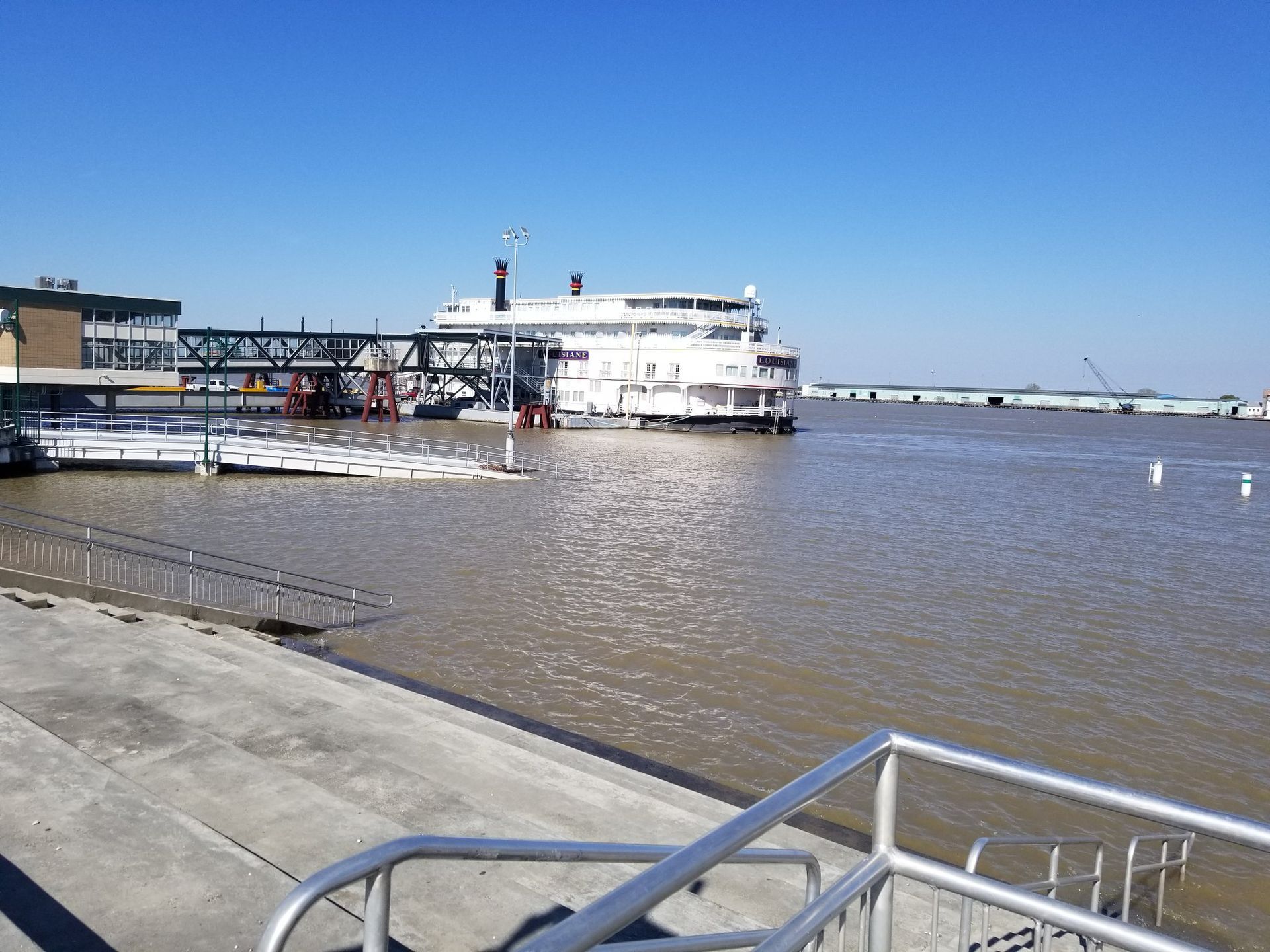World's Largest Drainage Pump Station: world record in Plaquemines Parish, Louisiana
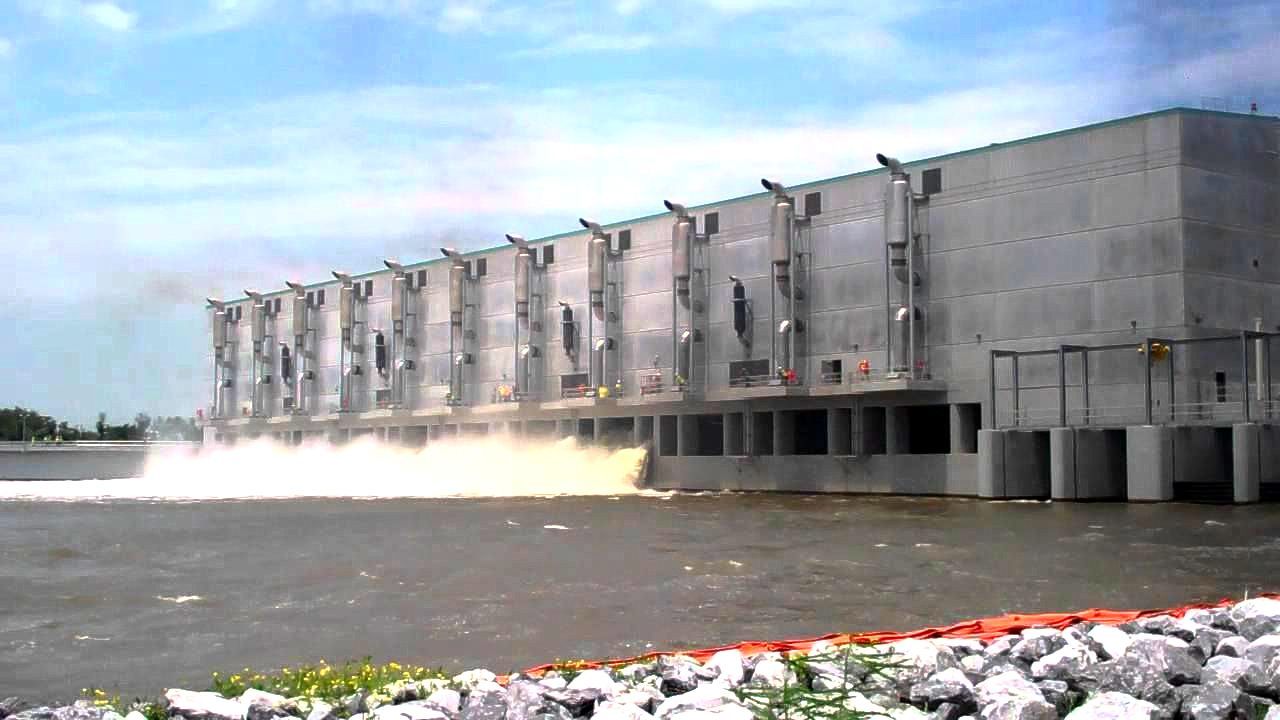
Belle Chasse, Louisiana, United States--The West Closure Complex, located at the confluence of the Harvey and Algiers canals in Belle Chasse, Louisiana, United States, a $1.1 billion engineering feat that is meant to protect West Bank homes from flooding in the event of a 100-year storm surge; the unprecedented 20,000 cubic feet per second storm water drainage pumping station sets the world record for being the World's Largest Drainage Pump Station, according to the WORLD RECORD ACADEMY.
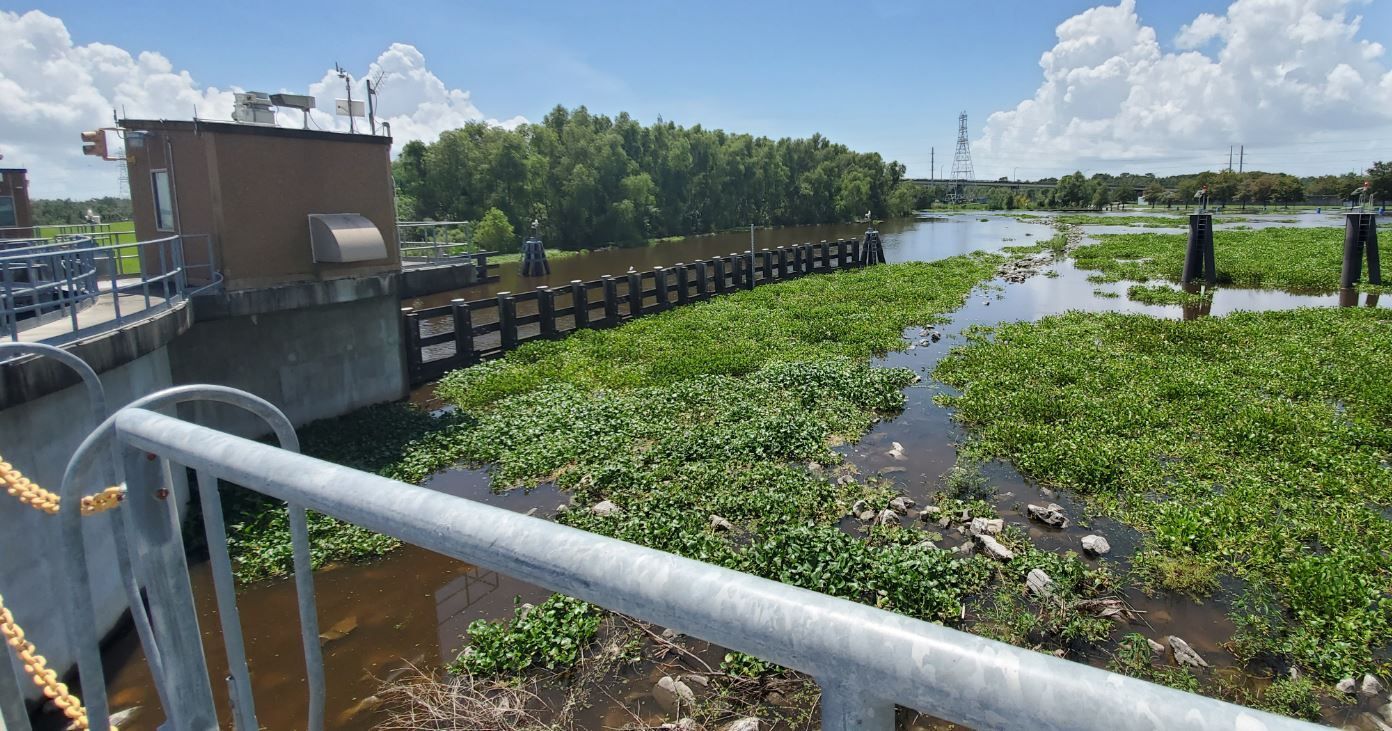
"The
West Closure Complex is the largest pump station in the world, a $1.1 billion engineering feat that is meant to protect West Bank homes from flooding in the event of a 100-year storm surge. On Thursday(May 12) the Southeast Louisiana Flood Protection Authority closed the gate and ran the 11 pumps to make sure they were ready for the 2022 hurricane season,"the
NOLA.com says.
"The pump station is located at the confluence of the Harvey and Algiers canals in Belle Chasse. During a severe storm, water is coming from two directions: storm surge from the south, from the Gulf of Mexico, and rainwater runoff from the West Bank. If there is a risk of a storm surge, the facility can close its massive 225-foot sector gate -- the largest in North America -- to block the water. The pie-shaped pieces of the gate can close within 15 minutes during a storm, but generally remain open and are wide enough to allow barge traffic to come through in each direction.
"The rainwater runoff coming from the north also needs to be moved, which is where the pumps come in. The facility’s 11 "flower pot" pumps are fueled by 5,000-horsepower diesel engines and send excess water into the marshes to the south."
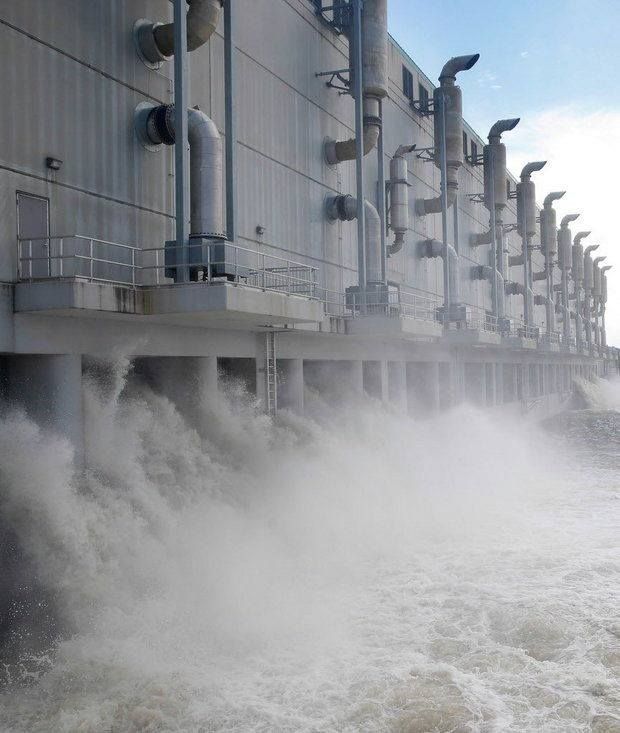
"From its historical beginnings, Louisiana has been susceptible to annual flooding from the Mississippi River. Always intent on finding the straightest, steepest course down to the Gulf of Mexico, the Mississippi has changed its course many times. However, since the late 1800s, a levee system, particularly around New Orleans has helped contain the massive body of water. This system appeared to do its job until the fateful year of 1927, when heavy spring rains soaked the Midwest and changed the way America harnessed the Mississippi River," the Southeast Louisiana Flood Protection Authority – West says.
"The Louisiana legislature created the Coastal Protection and Restoration Authority and placed it under control of the governor and directed this organization to represent Louisiana before congress in all matters concerning hurricane flood protection and coastal restoration.
"Under pressure from state citizens following hurricanes Katrina and Rita, the Louisiana legislature took additional action. It determined that flood protection of its citizens would be better served by combining its many New Orleans area levee districts into two flood protection authorities. During a 2006 special legislative session, the Southeast Louisiana Flood Protection Authority—West and the Southeast Louisiana Flood Protection Authority—East were created."

"Meyer Engineers, Ltd. provided Construction Management on the $870 million Gulf Intracoastal Waterway West Closure Complex Project. This massive project, which included a 20,000 CFS drainage pump station, spans three parishes – Jefferson, Orleans, and Plaquemines," the Meyer Engineers, Ltd says.
"Also included in the project are two sector gates, 5700’ of concrete Tee-wall supported on concrete piling, 9000’ of Earthen Levee, a Safe House for the pump station operators, cofferdams, dredging, bulkheads, dolphins, fenders, guide walls, rock jetties, concrete roads, and asphalt roads. The complex reached its substantial completion date on June 1, 2011, accomplishing the goal of completion prior to the 2011 hurricane season.
"The unprecedented 20,000 cubic feet per second storm water drainage pumping station, the largest of this type in the world, includes 11 vertical 11’ diameter pumps, powered by 12 cylinder, 5400 horse power Caterpillar diesel engines. The closure complex is the largest feature that will cross the GIWW, a federally-maintained navigation channel. The complex consists of a 225’ sector gate, a 110’ secondary gate, the pump station, and a combination wall which consists of 54” spiral weld piles and steel sheet piles."
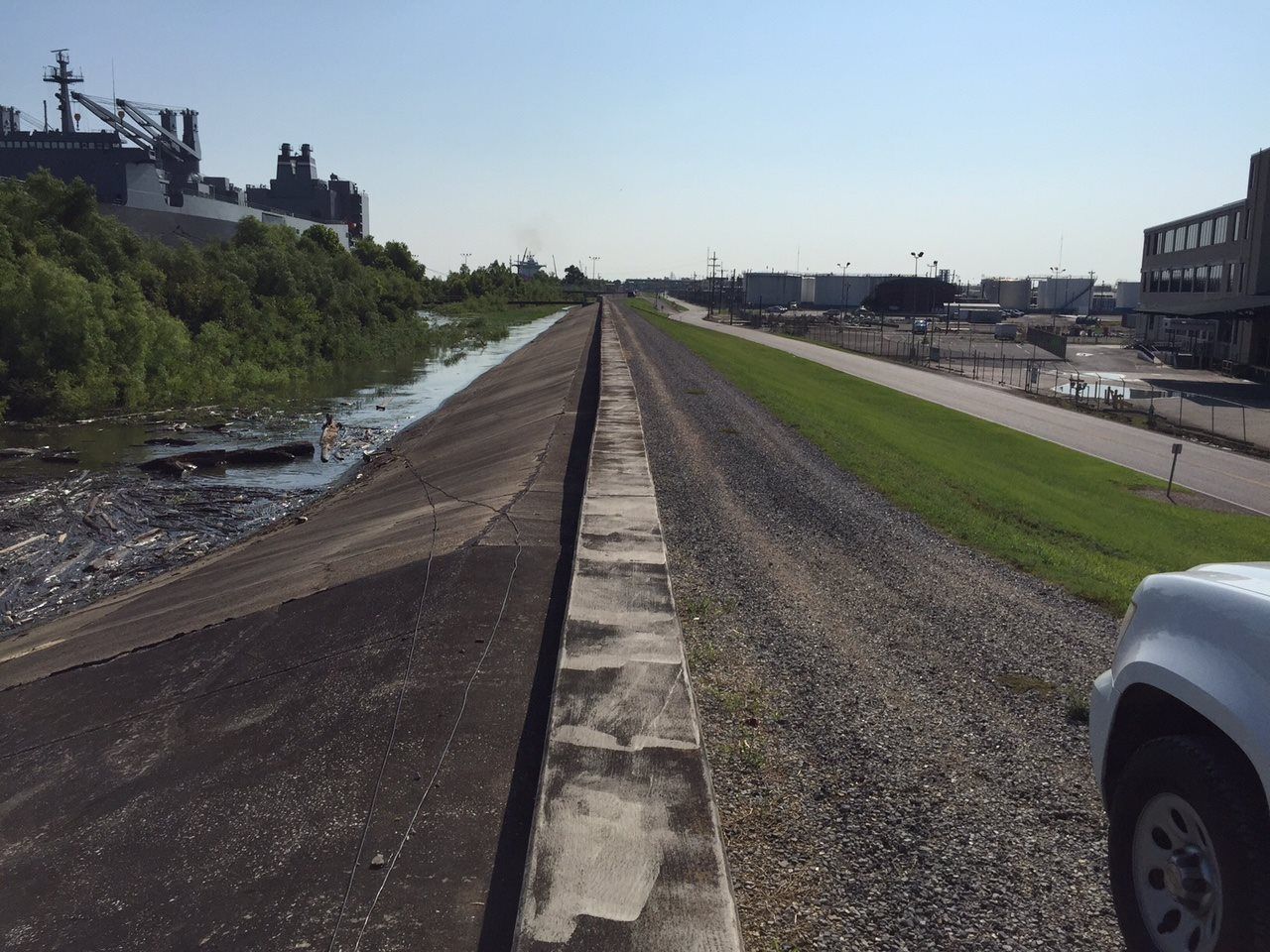
"The Gulf Intracoastal Waterway West Closure Complex is a part of the New Orleans Drainage System; it consists of a navigable floodgate, a pumping station, flood walls, sluice gates, foreshore protection, and an earthen levee. The complex was designed to reduce risk for residences and businesses in the project area from a storm surge associated with a tropical event, with an intensity that has a one percent chance of occurring in any given year. This project was operated for the first time on August 29, 2012, in response to Hurricane Isaac.
"The project is located approximately one half mile south of the confluence of the Harvey and Algiers canals on the Gulf Intracoastal Waterway. The location is next to the Environmental Protection Agency's Bayou aux Carpes Clean Water Act (CWA) 404(c) area, a wetland area of national significance.
"The GIWW West Closure Complex consists of a navigable floodgate, a pumping station, floodwalls, sluice gates, foreshore protection, and an earthen levee. The project also required the dredging of Algiers Canal, as well as the realignment of Bayou Road. Project challenges consist of maintaining navigation traffic on the GIWW (a Federal navigation channel with heavy commercial barge traffic) and the location of the complex in relationship to the Environmental Protection Agency’s Bayou aux Carpes Clean Water Act (CWA) 404(c) area, a wetland area of national significance." (Wikipedia)
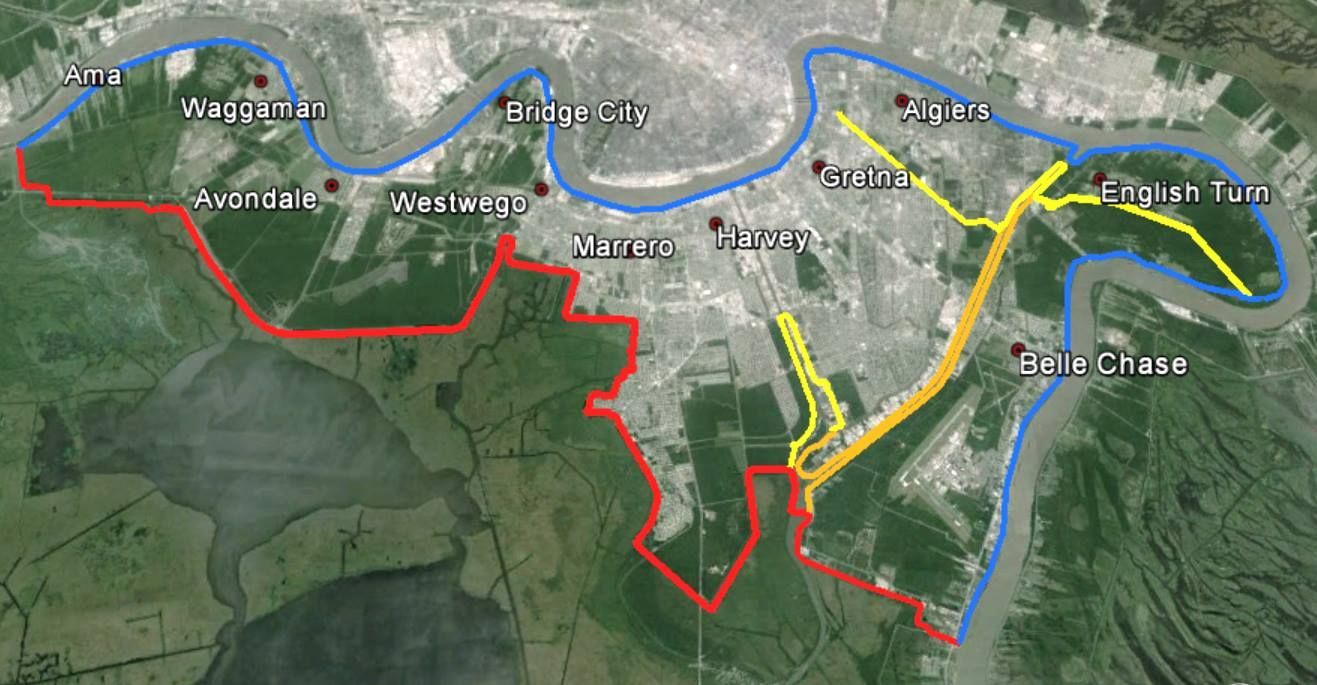
"Kiewit and its joint venture partner completed the construction of the Gulf Intracoastal Waterway West (GIWW) Closure Complex, a $1 billion hurricane storm surge protection facility for the city of New Orleans and surrounding areas. This included one of the world’s largest interior drainage pump stations and one of the nation’s largest navigable floodgates. In collaboration with the United States Army Corps of Engineers, the project operated double shifts, seven days per week for 22 months to meet schedule and came in millions under the client’s budget," the Kiewit Corporation says.
"Construction included a series of flow control sluice gates, 6,500 feet of new levee and 130,000 cubic yards of cast-in-place concrete. Pile driving for the pump station was a critical component of this project, involving twelve hundred 600- to 750-millimeter diameter piles in just 100 days. The team developed specialized mix designs and ran its own on-site batch plant. The cofferdam and dewatering system used vertical wick drains and horizontal drainage blankets.
"The project reached a major milestone when eight of the 11 pumps were operational prior to the 2011 hurricane season and raised protection to the level of a 100-year storm. GIWW won ENR’s Best Civil Works/Infrastructure Project and Best Project of the Year in Texas and Louisiana."
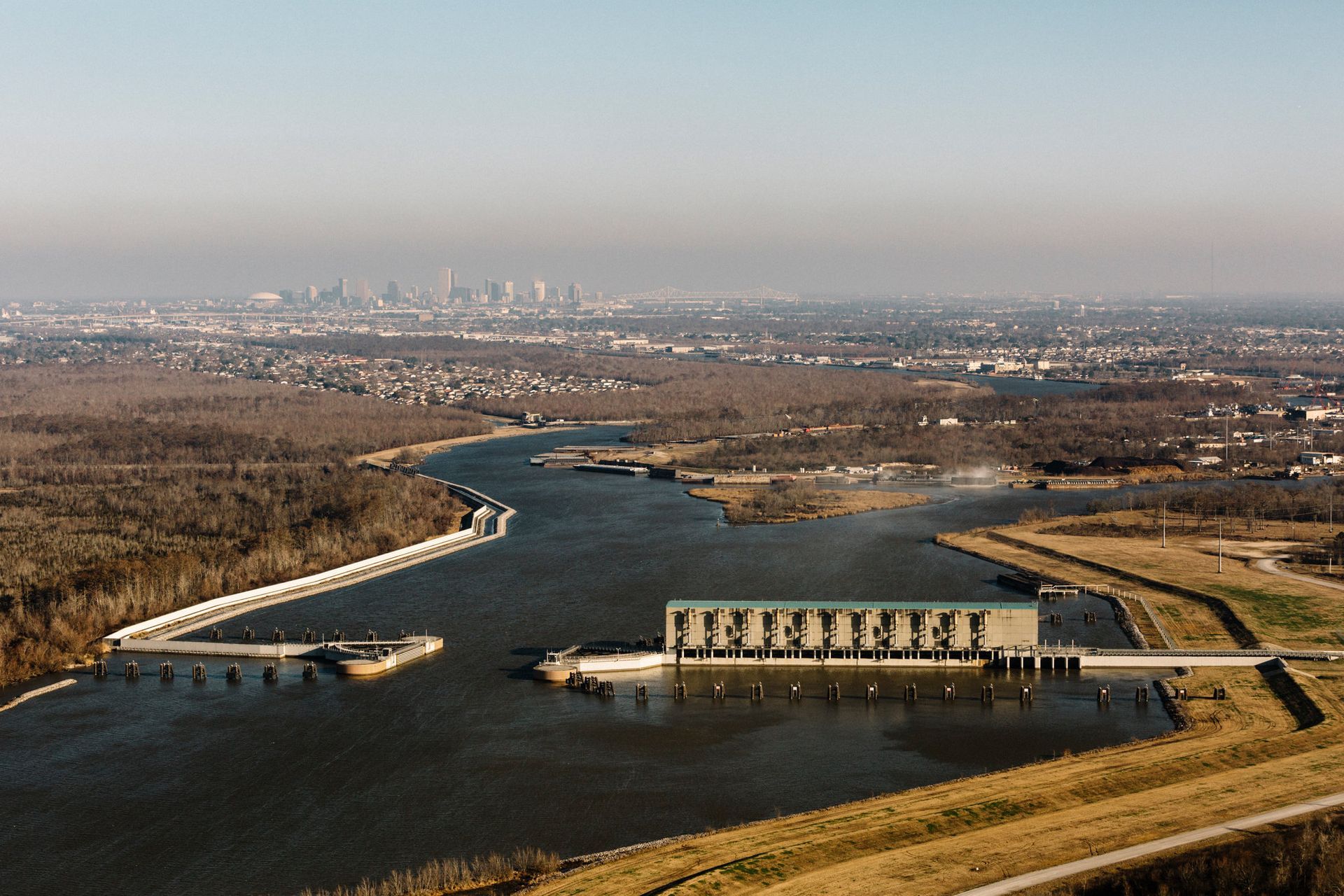
"New Orleans sits smack dab between the Gulf of Mexico and Lake Pontchartrain, and when a hurricane comes rolling in, those bodies of water tend to spill into the streets. This summer, the U.S. Army Corps of Engineers started construction on a barrier that can block a 16-foot swell blown in from the Gulf and a massive pumping station that will blast floodwaters back to sea," the Popular Science says.
"The $500-million station—the newest installment of a $14-billion federal project to fortify the Big Easy against the type of fierce storm the city sees once in 100 years—will protect the 240,000 residents living in New Orleans, a high-risk flood area because of its nearby shipping canals. The Gulf Intracoastal Waterway is one of the city’s most trafficked industrial waterways, but it provides a perfect path from the Gulf for a 16-foot storm surge to flood homes and businesses.
"When a major storm threatens, the waterway’s new West Closure Complex will mount a two-point defense. First, operators will shut the 32-foot-tall, 225-foot-wide metal gates to block the surge. Then they’ll fire up the world’s largest pumping station, which pulls 150,000 gallons of floodwater per second. And unlike the city’s notorious levees, the WCC won’t break when residents need it most. “This station is designed to withstand almost everything,” including 140mph winds and runaway barges, says Tim Connell, the U.S. Army Corps of Engineers’s project manager for the complex."
